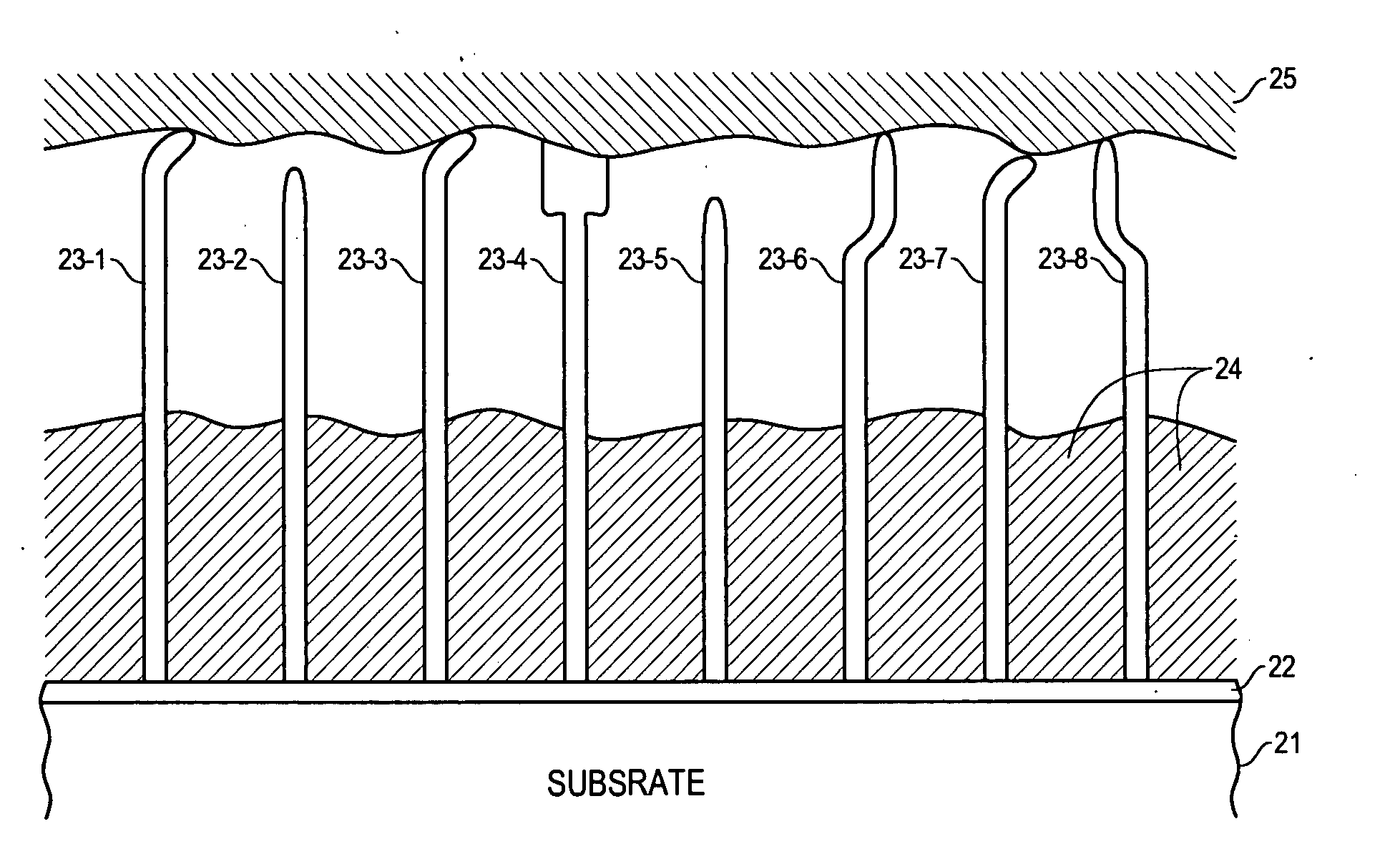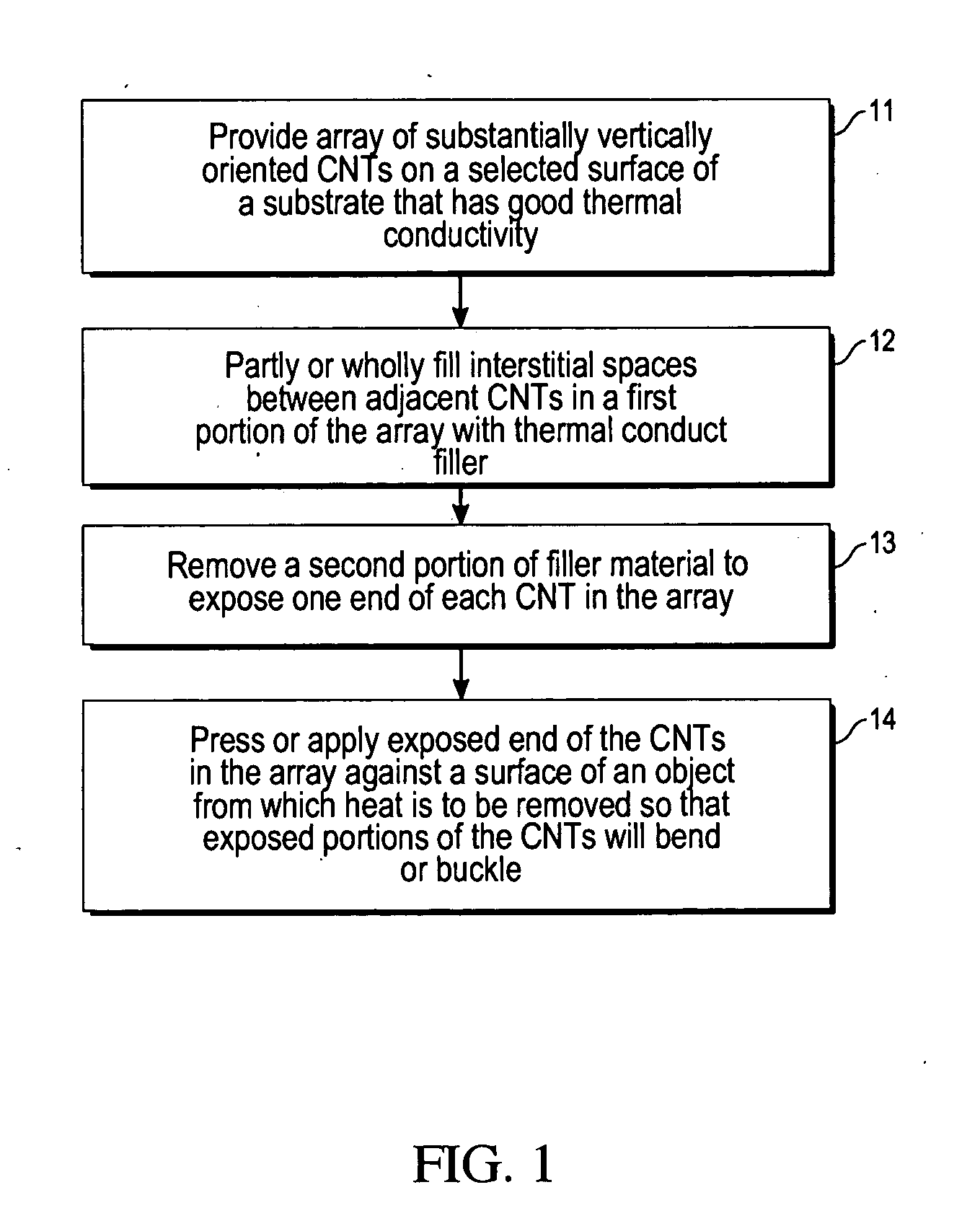Nanoengineered thermal materials based on carbon nanotube array composites
a carbon nanotube and composite material technology, applied in nanoinformatics, electrical apparatus construction details, light and heating apparatus, etc., can solve the problems of increasing the difficulty of providing heat dissipation and transportation for such components and devices, increasing local power consumption, and increasing the mechanical strength of carbon nanotubes (cnts). , to achieve the effect of improving the mechanical strength of carbon nanotubes, reducing the cost of production and high thermal conductivity
- Summary
- Abstract
- Description
- Claims
- Application Information
AI Technical Summary
Benefits of technology
Problems solved by technology
Method used
Image
Examples
Embodiment Construction
[0022]FIG. 1 illustrates a procedure for practicing an embodiment of the invention. In step 11, an array of substantially vertically oriented CNTs is grown on a selected surface of a substrate that has good thermal conductivity. The substrate may be a metal-doped silicide, a diamond film, or a metallic substance having a maximum electrical or thermal conductivity. Whether the array is patterned or not, it is preferable to provide a thin CNT catalyst layer (e.g., Ni, Fe, Co, Pd or Al or a combination thereof) having a layer thickness of 2-50 nanometers (nm), or more if desired. When the CNT is grown in an electrical field oriented substantially perpendicular to the selected substrate surface, the CNTs can be grown in greater lengths (1-50 μm or more) in a direction substantially parallel to the electrical field direction.
[0023] In step 12, interstitial spaces between adjacent CNTs are partly or fully filled with a selected filler material that is preferably a good thermal conductor ...
PUM
| Property | Measurement | Unit |
|---|---|---|
| length | aaaaa | aaaaa |
| thickness | aaaaa | aaaaa |
| thickness | aaaaa | aaaaa |
Abstract
Description
Claims
Application Information
 Login to View More
Login to View More - R&D
- Intellectual Property
- Life Sciences
- Materials
- Tech Scout
- Unparalleled Data Quality
- Higher Quality Content
- 60% Fewer Hallucinations
Browse by: Latest US Patents, China's latest patents, Technical Efficacy Thesaurus, Application Domain, Technology Topic, Popular Technical Reports.
© 2025 PatSnap. All rights reserved.Legal|Privacy policy|Modern Slavery Act Transparency Statement|Sitemap|About US| Contact US: help@patsnap.com



